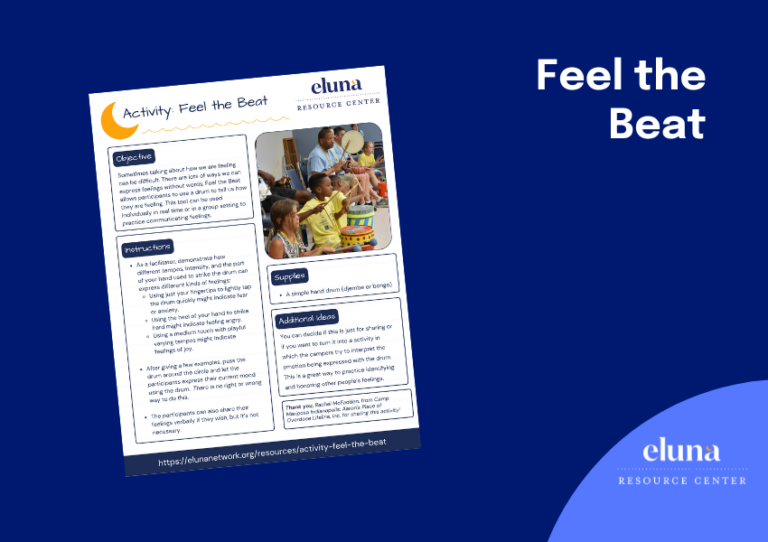Supporting Youth with Anxiety
 Like everyone else, children and teenagers also struggle with stress, especially when undergoing significant changes in their lives. Additional difficulties, such as schoolwork, family problems, adverse childhood experiences, or peer pressure, can trigger stress. If not managed properly, stress could lead to anxiety and other psychological challenges.
Like everyone else, children and teenagers also struggle with stress, especially when undergoing significant changes in their lives. Additional difficulties, such as schoolwork, family problems, adverse childhood experiences, or peer pressure, can trigger stress. If not managed properly, stress could lead to anxiety and other psychological challenges.
According to the American Psychiatric Association (APA), anxiety is referred to as the anticipation of future concern, with fear as an emotional response or uneasiness, and is associated with muscle tension and avoidance behavior [ * ]. Some may experience physical symptoms such as headaches, shortness of breath, stomach pain, nausea, and vomiting when anxious. Though feeling anxious is normal, excessive anxiety could affect their relationships, social development, and how they enjoy life.
In this article, I will help you understand anxiety in youth by pointing out the common signs and symptoms. I will also discuss strategies to support youth by honing their Circle of Control and empowering them with additional techniques to navigate anxiety and stress.
Understanding Anxiety in Youth
The levels of anxiety differ with each developmental age; they can range from mild to moderate to severe. Younger kids feel anxious about specific fears, like spiders and monsters. While teenagers have more abstract worries about their physical appearance and how others see them.
As a parent, mentor, camp leader, or educator, learning how to manage youth anxiety can help children and teens develop a more proactive mindset and a healthy response to stress.
Different Types of Anxiety Disorders in Youth
Social Anxiety Disorder (SAD) This is also known as social phobia. Teens and children with SAD are mostly worried that they will do something embarrassing in front of others. They are afraid to speak and perform in public and avoid social gatherings.
Common symptoms of Social Anxiety Disorder:
- Poor social skills
- The child refuses to go to school
- Difficulty in expressing their thoughts and ideas
- Being afraid when called into class
- Social situations trigger tantrums, crying, or excessive fear.
Separation Anxiety Disorder (SAD) For infants and toddlers, separation anxiety is a normal developmental stage. At 3 years of age, most children outgrow it. But when separation anxiety seems prolonged, this could be an early sign of Separation Anxiety Disorder. SAD causes the child to suffer from extreme sadness and worry when separated from a loved one. They would feel nervous and anxious when left alone.
Common symptoms of Separation Anxiety Disorder:
- The constant worry that something bad might happen to a loved one
- Reluctance to sleep away from home without a parent
- The child is anxious when left alone
- Frequent complaints of uneasiness, headache, and stomachache when separated from a loved one
- Unreasonable fear of going to school without a parent or caregiver
Panic Disorder. Children with panic disorder experience sudden attacks of anxiety with physical symptoms such as shortness of breath, palpitations, and excessive sweating. This type of disorder could be the result of a very stressful life experience.
Tip: If you are worried that a child or teen might be experiencing symptoms of Panic Disorder due to a traumatic experience, talk with a mental health professional and empower them with reflective tools, such as My Circle of Control Worksheet.
Common symptoms of Panic Disorder:
- When anxiety attacks occur on their own without any triggering factor
- Panic attacks come with physical symptoms such as chest pain and shortness of breath.
- The child is experiencing intense fear that repeated panic attacks will soon occur.
- Avoiding crowds or places where they once had an episode of a panic attack
- Feeling like they are losing control of themselves or have unrealistic thoughts
Generalized Anxiety Disorder (GAD) Adolescents with GAD experience extreme distress and worry without the ability to pinpoint a reason. If left untreated, it could result in academic underperformance, substance misuse, and poor social relationships. Children struggling with GAD may require additional reassurance from their parents and loved ones.
Common symptoms of Generalized Anxiety Disorder:
- Constant fear for an unknown reason
- They worry too much about future events or their safety.
- Consistently worked up about something and gets easily fatigued.
- Difficulty concentrating and having trouble sleeping or staying asleep.
- Physical symptoms include muscle tension, trembling, and an inability to relax.
What Causes Anxiety in Youth?
Research suggests that, though a toddler may outgrow pediatric anxiety, there are still many environmental factors and stressful events that could trigger anxiety in their teenage years [ * ]. Some of these are the death of a significant person, starting school, meeting new friends, or family challenges.
Behavioral inhibitions, like when a child is extremely shy and withdraws from social interactions, could also be a temperament factor that causes anxiety disorders [ * ].
Tips for Supporting Youth with Anxiety
Be patient, listen carefully, and encourage children and teens to take small steps forward by introducing just one or two coping skills at a time. Here are some strategies that could help them find some calm and control.
Circle of Control
Focusing on their Circle of Control will help promote a more proactive mindset. It will help children realize that they are capable of creating positive changes. It will slowly allow them to let go of their fears by differentiating between what is in their control and what is not, so that they are able to.
Cognitive Behavioral Therapy (CBT) Techniques
CBT for kids is a talk therapy that focuses on how their feelings and emotions can affect their behavior. The goal of this therapy is to help youth learn to recognize baseless thought patterns that lead to unwanted behavioral outcomes. CBT activities, like play activities and art therapy, are specially tailored to the child’s age and maturity.
Creative Expression
Encourage children to draw and paint, or write their thoughts and emotions on a piece of paper and drop them in “mindfulness” jars. Therapeutic books for children, such as Art With Heart, are also good for mental stimulation and emotional development. These books use a blended approach to help your child develop their coping skills and build a vocabulary for their emotions.
Physical Exercise
We all know that physical exercise is good for the body, but it can also help to deal with anxiety and depression. Exercise can relieve stress and stimulate the brain to release “happy hormones”, like endorphins, that can help to improve sleep, moods and mindsets.
Studies show that regular exercise also enhances attention and effectively reduces levels of anxiety in children [ * ].
Active Listening
Listen beyond their words by observing movements, expressions, and nonverbal cues. Try to recognize the telltale signs that they are getting anxious. Spend quality time together, model by talking about your feelings, and invite youth to share about the things that make them feel scared or anxious. Acknowledge that their anxiety is real.
Try these conversation starters:
- Can you share about a time that you felt happy or proud today?
- How did someone help you today?
- If fear is an animal, what animal would it be?
- If feeling nervous has a color, what color would it be?
- What feelings stick around and what feelings come and go?
- When you experienced a big feeling today, where did it show up in your body? (head, stomach, chest, etc).
- What do you say to yourself when something is hard?
- If I had a magic wand, what are three changes in your life that you would wish for?
- What was your rose and thorn today? (rose = something that brought you joy, thorn = something that was prickly or challenging)
Watch this video for some tips and stories about the importance of listening.
Teach Coping Skills
When children and teens are experiencing a stressful situation, learning a couple of coping strategies can help them get through it. These strategies can help youth regulate their emotions and distract them from the factors that may be triggering their anxiety. Some effective coping skills are:
- Calming music
- DIY Fidget toys
- Deep-breathing exercises
- Grounding Techniques
- Mindfulness Activities
- Guided Imagery
- Journaling
- Zones of Regulation
- Click here for more of Eluna’s go-to activities for camp & home including Calm Down Keychain, the Hug Jar, and Fear in a Hat
Takeaways
Children and teenagers face different levels of stress during their developmental stages. Feeling nervous and anxious from time to time is a normal reaction. Some may outgrow prolonged anxiety with age, and some may not. Anxiety disorders in youth are treatable conditions. As parents or support professionals, there are a lot of ways that you can support youth when navigating their anxiety and unwanted emotions. Encourage children and teens to take positive steps forward and always know when to ask for professional help.
For personalized resource support for children affected by grief, addiction, or related mental health challenges, Eluna’s Resource Center is available to help. Click here to learn more.


